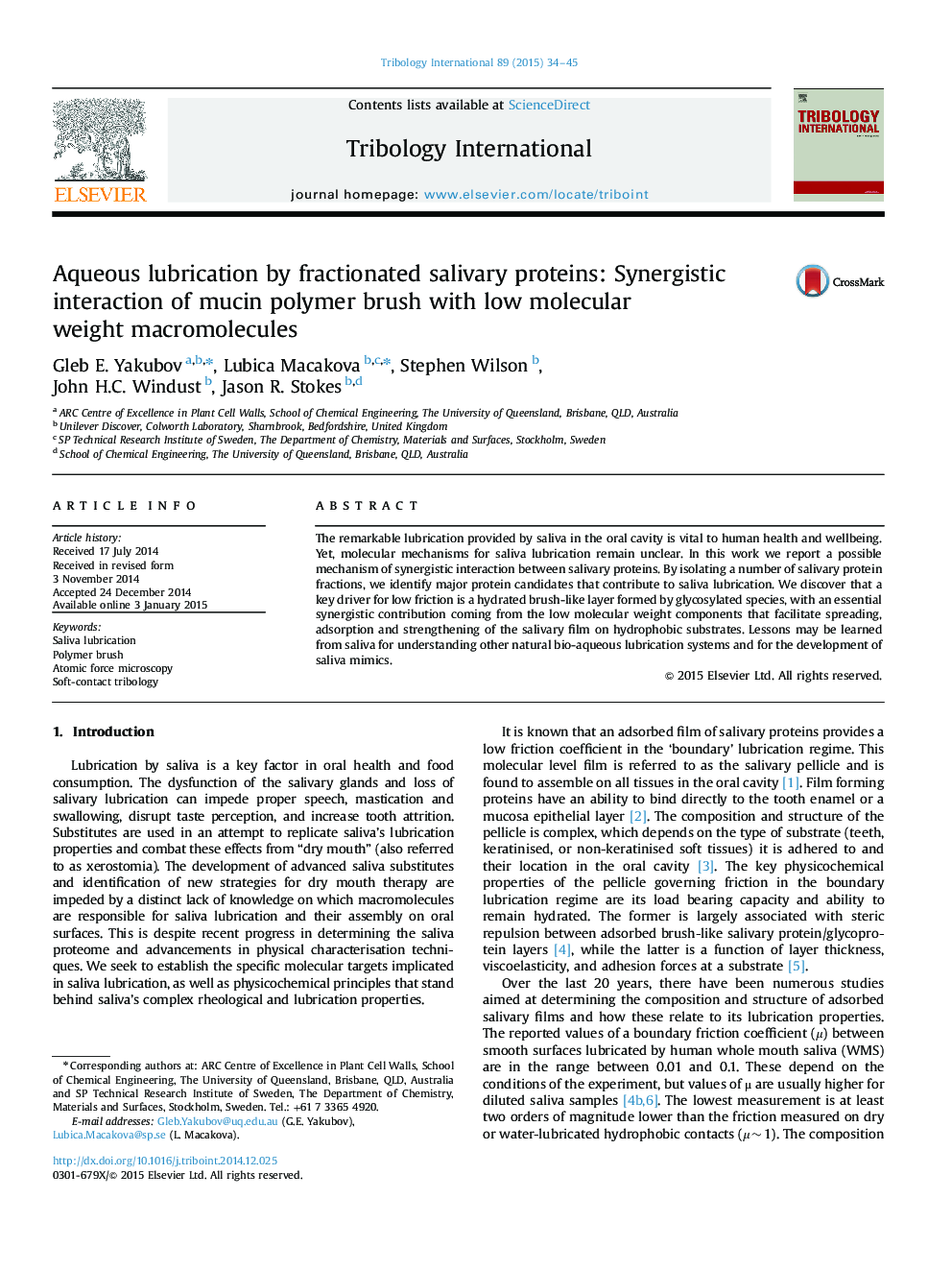| کد مقاله | کد نشریه | سال انتشار | مقاله انگلیسی | نسخه تمام متن |
|---|---|---|---|---|
| 614547 | 1454816 | 2015 | 12 صفحه PDF | دانلود رایگان |

• Saliva lubrication stems from a synergistic interaction between mucins and lower-molecular weight proteins.
• The superior lubrication is due to an extended layer of densely adsorbed mucins in a brush-like conformation.
• Saliva depleted of proteins with Mw larger than 100 kDa is not lubricious.
• Combination of PRP-rich to the mucin-rich fractions results in a saliva-like lubrication.
• The cystatin S/SA and statherin facilitate spreading of saliva on hydrophobic surfaces.
The remarkable lubrication provided by saliva in the oral cavity is vital to human health and wellbeing. Yet, molecular mechanisms for saliva lubrication remain unclear. In this work we report a possible mechanism of synergistic interaction between salivary proteins. By isolating a number of salivary protein fractions, we identify major protein candidates that contribute to saliva lubrication. We discover that a key driver for low friction is a hydrated brush-like layer formed by glycosylated species, with an essential synergistic contribution coming from the low molecular weight components that facilitate spreading, adsorption and strengthening of the salivary film on hydrophobic substrates. Lessons may be learned from saliva for understanding other natural bio-aqueous lubrication systems and for the development of saliva mimics.
Figure optionsDownload high-quality image (183 K)Download as PowerPoint slide
Journal: Tribology International - Volume 89, September 2015, Pages 34–45